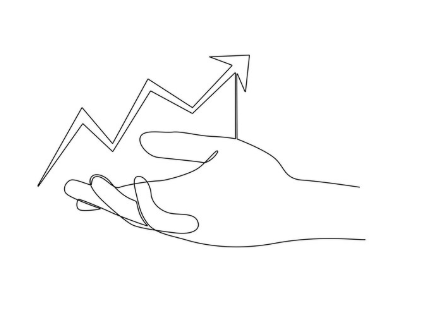Every Trade Feels Like a Gamble… But Does It Have to Be?
Should you risk big or play it safe in trading? Discover how Indian traders can align risk with personality, capital, and goals.
risk in trading
Imagine this: you’ve spent hours analyzing charts, watching Nifty levels, reading market news. Your gut says this trade is a winner. But then the voice creeps in — “What if I lose it all?”
This dilemma is familiar to every Indian trader, especially those in their 30s and 40s trying to make a second income or break free from the 9–5 grind. The heart wants high returns; the mind wants safety.

So what’s the right approach to risk in trading? Should you go all-in on high-conviction trades or play it safe and survive longer?
As with most things in trading — “It depends.” Let’s explore why.
🧠 Risk in Trading Isn’t Just About Money — It’s About You
Trading is never just about capital. It’s about your:
- Risk tolerance
- Financial situation
- Mental resilience
- Lifestyle demands
Let’s take the example of Allen Brunet, a trader with ₹41 lakh ($50,000). He needs to earn ₹16.5 lakh ($20,000) a year to survive. That’s a 40% annual return.
Now think about it: Is it realistic for someone just starting to make that consistently?
Probably not. Not unless you’re Tom Baldwin, who turned ₹20 lakh into much more while risking a lot.
But most of us aren’t Tom Baldwin.
Real Talk: What’s Your Situation?
- Do you have a job? Family responsibilities?
- Can you survive a 30% drawdown emotionally and financially?
- Can you still think rationally after losing ₹1 lakh in a day?
If your answer is no, then risking big isn’t courage — it’s gambling.
⚖️ Should You Risk Big If You’re Sure About the Trade?
Some traders say, “If I’m confident, I should go big.”
Let’s be clear — conviction is good. But even the best setup can fail. News can break. Markets can shift. Psychology can betray.
Case Study: The Illusion of Certainty
You’ve done your research. You’ve waited days for this setup. Everything lines up — RSI, breakout, volume. You go 20% of capital in.
Then… a sudden RBI announcement or global market panic. Your perfect setup crashes.
Now you’re:
- Holding a massive losing position
- Emotionally frozen
- Unable to act on the next opportunity
Key lesson? The risk is not just losing money — it’s losing your mental edge.
🧬 Your Personality Should Shape Your Trading Risk
Not All Traders Are Built the Same — And That’s Okay
Some people thrive under pressure. Others crumble.
- High-risk tolerance: Thrive on volatility, recover quickly.
- Low-risk tolerance: Need stability, can’t sleep after a ₹5k loss.
Don’t force yourself to be someone you’re not. Build your risk approach around your nature.
Ask Yourself:
- Can I objectively assess the trade even after entry?
- Will I follow stop-loss discipline even with big money on the line?
- Will I overtrade to recover?
If the answers lean toward emotional volatility — reduce your trade size.
🎯 The Case for Small Position Sizing: Survival First
Big wins are glamorous. But small trades keep you in the game long enough to win big.
Benefits of Trading Small:
- Less emotional pressure
- Easier to stay rational
- Higher consistency
- Allows more learning with less pain
Quick Cricket Analogy:
You’re a new batsman. Would you aim for sixes every ball or build innings patiently?
Trading is the same — build your rhythm. Don’t chase every ball.
💣 The Hidden Risk: Ego, Not Capital
Many Indian traders lose not because of their system, but because of their ego.
“I need to recover today.”
“I can’t be wrong.”
“I’m confident this will bounce back.”
This mindset leads to oversized trades, revenge trading, and wipeouts.
“The market doesn’t care how confident you are. It only pays those who manage risk with humility.”
🧘🏽♂️ How to Align Your Risk Style with Your Personality
Steps to Finding Your Sweet Spot
- Calculate Your Risk Budget
Decide how much capital you can lose monthly without stress.
(Usually 1–2% per trade is ideal.) - Test Yourself
Keep a journal. After each trade, rate your emotions. Were you anxious? Calm? - Define Your Goal
Do you want steady income, aggressive growth, or just learning? - Match Strategy to Lifestyle
A busy IT professional can’t monitor trades all day. So go with swing trades, not intraday scalping. - Adjust Monthly
As your capital, experience, or psychology changes, so should your risk model.
🔑 Quick Takeaways
- There’s no one-size-fits-all answer to trading risk.
- Bigger risk = bigger potential, but also bigger emotional toll.
- Know your goals, personality, and financial situation.
- Survive first. Thrive next.
- Emotional control is often more valuable than market knowledge.
🤝 Final Thoughts: Choose Your Pain
In trading, you either:
- Accept the pain of small gains while learning slowly
OR - Face the pain of huge losses from overconfidence
Which pain would you rather live with?
Trading isn’t about being right. It’s about staying in the game long enough to win.
Choose wisely.

Is risking more money the only way to make more in trading?
No. Better setups, discipline, and consistency often lead to more reliable profits.
How do I know my risk tolerance as a beginner?
Track your emotional response to trades and note stress levels during drawdowns.
Is risking 10% per trade too much?
For most, yes. Professionals usually risk 1–2% per trade to manage losses.
Can I succeed in trading with a low risk appetite?
Absolutely. Many successful traders grow slowly but steadily with small risks.
What’s the biggest mistake Indian traders make with risk?
Overconfidence in one trade and risking too much without a stop-loss.